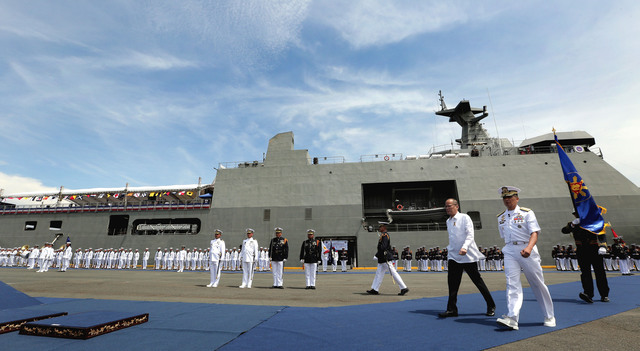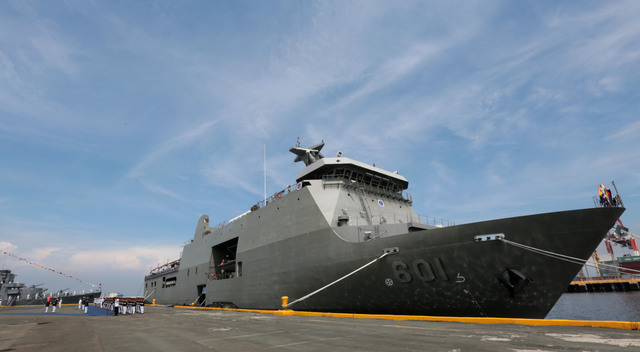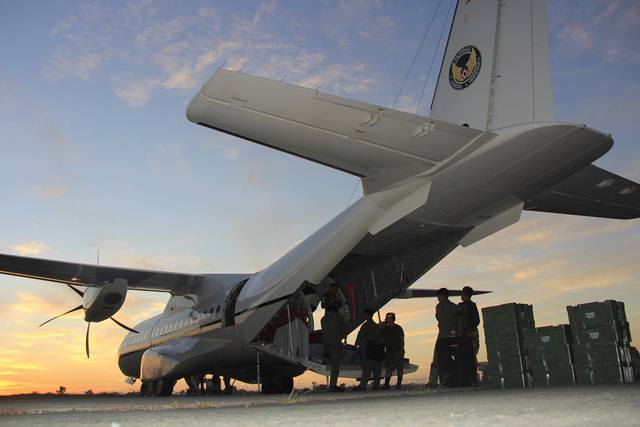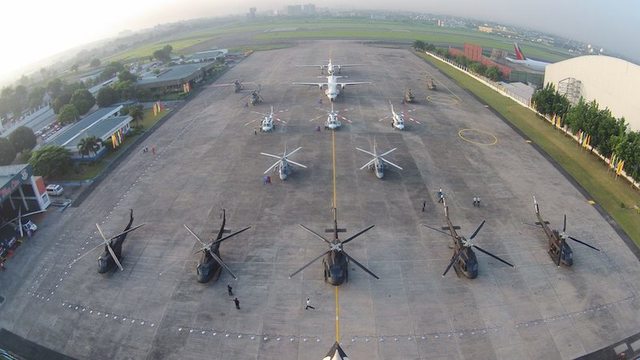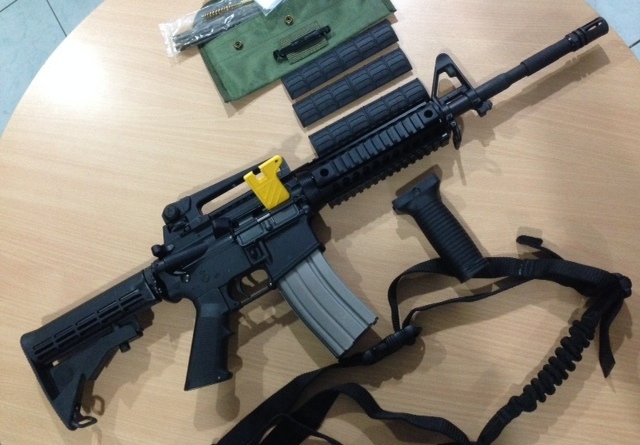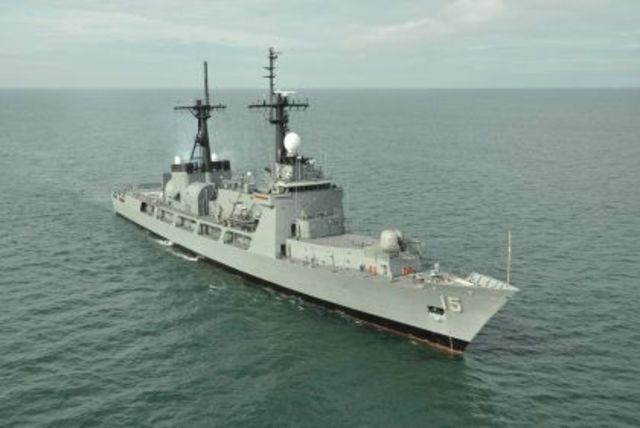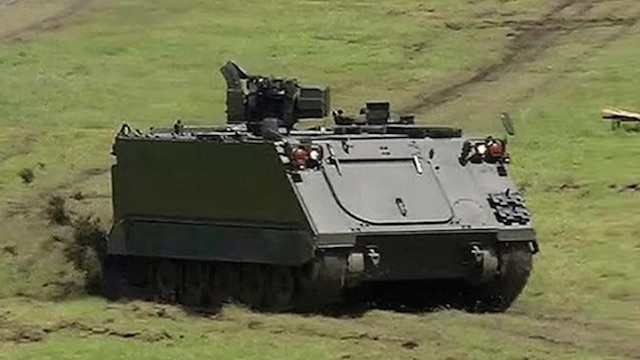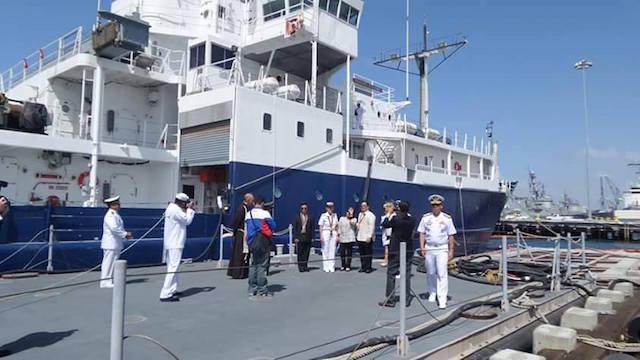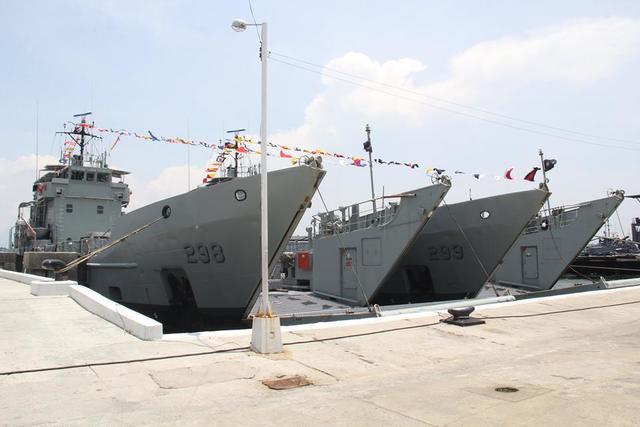Executive Summary
Rodrigo Duterte’s resounding victory in the presidential elections in May has shaken up the political landscape of the Philippines. His administration will be vastly different from that of his predecessor, President Benigno Aquino. Security policy under Duterte will likely be very different in focus and approach. Three key policies that involve significant foreign country support will change substantially if the Duterte administration follows through on his campaign promises: the Muslim Mindanao peace process; military modernisation; and maritime rights disputes with China.
The United States, Japan, and Australia are the Philippines’ three most important security partners. Each relationship has deepened and broadened during the Aquino presidency in relation to these three security policies.
Despite the signalled changes, more support from security partners will be needed and new opportunities for deepening and broadening these relationships can be realised. Much will change with Duterte’s iconoclastic victory. Much should stay the same in how the Philippines’ most important security partners engage with the country and its new administration.
Thirty years after the Marcos dictatorship, Philippine voters have delivered an historic result that has changed the nature of national politics. Rodrigo Duterte, the long-time mayor of Davao City, will be sworn in as the 16th president of the Philippines on 30 June 2016. Duterte is very different from his predecessors, particularly his immediate predecessor, Benigno Aquino III, and Aquino’s favoured presidential candidate, Manuel ‘Mar’ Roxas. It is these very differences that led to the high voter turnout and Duterte’s decisive victory.
[1]
The novelty of Duterte as an anti-establishment national political figure, his successful new style of campaign and his colourful, often controversial, rhetoric have created many uncertainties about the incoming presidency. Security policy is one important area where there are likely to be changes to existing policies. Consistent signals suggest that there will be many differences in focus and approach from the policies of the departing Aquino administration, and that these differences will be important for the Philippines’ security relations.
Three security policies seem poised for fundamental change under Duterte: the peace process in Muslim Mindanao; the process of military modernisation; and the approach to the maritime rights disputes with China in the West Philippine Sea.
[2] These security policies have been the main focus of the Aquino administration, underwent significant change then consolidation over Aquino’s term in office, are central to the security future of the Philippines, and have been actively supported by Australia, the United States, and Japan in particular.
The purpose of this Analysis is to examine what changes are likely in these three key security policy areas under the new president and what implications this will have for Australia and other regional countries. It will argue that president-elect Duterte has a Mindanao-centred view of security, focused on the Moro Islamic insurgency in western Mindanao and the nationwide communist insurgency. This view is very different from Aquino’s, which has given priority to external defence and Philippine maritime security.
Duterte the Different
The national political campaigns of Rodrigo Duterte and Mar Roxas presented voters with the starkest of choices of any of the five post-Marcos presidential elections. Roxas, with a few exceptions, presented himself as an Aquino clone.
[3] His campaign slogan ‘
Daang Matuwid’ (straight path) was the catchphrase for the Aquino administration. Like Aquino, Roxas was the candidate of the largest political party in the Philippines, the Liberal Party established by Roxas’ grandfather in 1946. Roxas’ campaign relied heavily on the party’s nationwide network of local political leaders. Roxas is the scion of one of the oldest, most powerful political dynasties in the Philippines, one that is originally based on rural land ownership but that has long decamped to Metro Manila. You cannot get more establishment than Benigno Aquino III (named after his father and grandfather) or Manuel Roxas II (named after his grandfather, the country’s fifth president).
Duterte is the least ‘establishment’ major presidential candidate of the post-Marcos era. He will be the first president from Mindanao and the first to come directly from a local political post.
[4] Unlike presidents Corazon Aquino, Fidel Ramos, Joseph Estrada, and Benigno Aquino, Duterte is from neither side of the Aquino–Marcos family feud, the main axis of Philippine politics for the last half-century. Unlike presidents Gloria Macapagal Arroyo or Benigno Aquino, neither of Duterte’s parents were former presidents.
[5] Also, Duterte’s presidential campaign was the first that did not rely on the backing of an existing major party or a pre-existing national network of local political leaders. As one of his opponent’s political advisers concluded after 9 May:
“In political parlance, if you are not organized, if you don’t have strong political machinery, you need to be extremely popular, just like what happened to Digong [Duterte].”[6]
Duterte’s rise to the presidency puts his administration in a unique position. On the plus side, Duterte has strong personal relations with a wide spectrum of key political elites and broad support for his administration. He prides himself on his links to the militant left.
[7] During the presidential campaign, he met with the leaders of the country’s main Muslim insurgency group, the Moro Islamic Liberation Front (MILF), in their stronghold. The group has welcomed his victory.
[8] At the same time, Nur Misuari, the founder of the second-largest Moro insurgency group, the Moro National Liberation Front (MNLF), declared Duterte his favoured candidate.
[9] Duterte won a clear plurality in the province of Ilocos Norte, the Marcos family bastion, and supports the burial of the former dictator in the Cemetery of Heroes.
[10] He also won a thumping plurality in Pampanga province, bailiwick of former president Macapagal Arroyo whom Duterte would like to see pardoned.
[11] Duterte was the only candidate to win provinces (and, in Metro Manila, cities) in all four key voting regions: Mindanao, Visayas, Luzon, and Metro Manila. His cabinet nominations reflect and reinforce this wide array of support.
This array of support, however, is not singularly positive for the incoming Duterte administration and poses two challenges. First, it increases the chances for disagreement and factionalisation within the administration. Reserving four cabinet positions for the militant left and inviting the exiled founder of the Communist Party of the Philippines, Jose Maria Sison, to return will not please many in the Philippine National Police and Philippine Army. Duterte’s choice as secretary of agriculture, Emmanuel Piñol from North Cotobato, Mindanao, is a long-standing opponent of the peace process with the MILF.
[12] Second, Duterte has weak ties with the national broadsheet media and national business associations such as the Makati Business Club, and he deliberately antagonises the Catholic Church, three powerful shapers of national discourse. President Estrada also lacked close ties with and support from these three groups and did not serve out his six-year term.
The second challenge stems primarily from Duterte’s campaign and is at the root of the comparisons between Duterte and the presumptive Republican Party nominee, Donald Trump.
[13] On a range of policy issues, Duterte adopted a number of at times mutually exclusive positions throughout the campaign. It still is not clear what was simply campaign rhetoric.
The first challenge of elite support could be more than transitory and should become clearer in the months after Duterte’s inauguration. This second challenge is common to many newly elected leaders and usually transitory. However, Duterte’s comparative lack of national political experience, colourful campaign rhetoric, and the absence of an articulated policy platform have aggravated this challenge.
Shifting security policies
Security policy is one area where the likely changes under Duterte could aggravate these two challenges. Few expected that security would be the policy area of greatest change under the Aquino administration. Indeed, under Aquino it has been the area where the Philippines’ relations with neighbouring states and major powers changed the most. Relations with Australia, the United States, and Japan broadened and deepened while relations with China suffered significantly. The capability and steadfastness of Foreign Affairs Secretary Albert del Rosario and Defense Secretary Voltaire Gazmin and their close working relationship with Aquino underpinned the sustainability of these policy changes.
By contrast, Duterte is likely to approach security policy very differently. Duterte’s statements on the Muslim Mindanao peace process, military modernisation, and maritime rights disputes with China, including those prior to the presidential campaign, reflect a coherent view of the security challenges facing the Philippines. It is a view that is founded in Duterte’s roots in Mindanao and his experience as mayor of Davao City. It is a different view of Philippine security to one that comes from a life in Metro Manila and study in the United States.
Muslim Mindanao
President Aquino put more of his own domestic political capital and effort into reviving the peace process with the MILF that started in 1997, than any other security issue. His 2011 secret one-on-one meeting with the head of the MILF, Murad Ibrahim, in Tokyo was the first of its kind between a sitting president and head of the MILF. The meeting resuscitated the peace process that had stalled in 2008 after the Supreme Court struck down a memorandum of agreement on ancestral domain.
[14] In March 2014, the peace negotiations between the executive and the MILF ended with the signing of the Comprehensive Agreement on the Bangsamoro (Moro homeland). The Agreement provides for the largest devolution of powers from the central government to Moro authorities and gained widespread support among Moro groups.
[15] In October 2015, the MILF and elements of the MNLF publicly signed a ‘unified declaration’ calling for the passage of the Bangsamoro Basic Law, the legal instrument to enact the Agreement.
[16] The House of Representatives and the Senate failed to pass their versions of the law.
The Aquino administration structured the peace process and its numerous joint implementation and verification mechanisms to involve supportive foreign states and international organisations to an extent not seen in prior peace processes between the Philippine Government and the MNLF or MILF. Malaysia was the third-party facilitator for the talks between the Aquino administration and the MILF, and Malaysia, Brunei Darussalam, and Indonesia are providing personnel to the international monitoring teams for the ceasefire between the MILF and Manila. An assistant commissioner of police from Canada headed the Independent Commission on Policing, while a former EU ambassador to the Philippines heads the Third Party Monitoring Group overseeing the transition from the Agreement to the Basic Law.
Beyond providing consistent diplomatic support for the peace process, Australia contributed to it in several direct ways. One of the three foreign experts on the seven-person Independent Commission on Policing tasked with providing recommendations for appropriate policy arrangements for the Bangsamoro government was an Australian. The Australian aid program to the Philippines, Australia’s second largest in Southeast Asia, has supported the peace process directly by providing technical assistance to the Office of the Presidential Adviser on the Peace Process, running the largest education program in Muslim Mindanao, and supporting peace-oriented civil society groups in the areas of conflict.
[17]
Duterte’s origins provide important clues to his likely approach to the peace process. Davao City is located near the conflict zones of Muslim Mindanao and has suffered from terrorist attacks and kidnappings by groups associated with the Moro insurgency. Duterte himself claims Moro lineage and is so recognised by the MILF and MNLF.
[18] His desire to find a political solution to the insurgency is beyond doubt and his knowledge of its roots and effects is greater than any of his 15 predecessors.
The only solution to the Moro insurgency that Duterte sees as feasible is a federal political system for the Philippines, a position he has advocated for decades. While generally supportive of the Aquino administration’s peace process with the MILF and passage of the Bangsamoro Basic Law, Duterte has presented it as a temporary stepping stone in the transition to a full federal system.
[19] Senator Alan Peter Cayetano, Duterte’s vice-presidential running mate, is one of the strongest opponents of the current Bangsamoro Basic Law, even though he co-sponsored the failed Senate version, claiming it will give the MILF too much power.
[20]
A major priority of Duterte and members of his transition team is to revise the 1987 constitution to introduce a federal parliamentary system, with the goal of completing this before the end of Duterte’s term in 2022. There is no clear blueprint yet for this alternative system to the present unitary presidential one. Looking more closely at the Moro community in Mindanao, the MILF and MNLF are largely divided along linguistic and tribal lines. The MILF is predominantly Maranao and Maguindanao and located on the main island of Mindanao. The MNLF is primarily Tausug, Yakan, and Samal, and located on the coast and in the outer islands. The present Autonomous Region of Muslim Mindanao and the envisaged political entity in the Comprehensive Agreement on the Bangsamoro straddle these intra-Moro differences. Duterte has considered two regions with delegated sovereign powers for Muslim Mindanao to better present the linguistic group differences in the Moro community that divide the main insurgent groups.
[21]
This grander solution to the Moro insurgency requires a radical political change and faces several problems. First, the 1987 constitution has never been amended despite every subsequent presidential administration publicly advocating its amendment. No administration has even advanced to the first stage of organising the special legislative body to draft and vote on the amendments. With some justification, voters, who would have to approve any amendments by plebiscite, have expressed scepticism for the real reasons serving politicians want to reopen the constitution and what they may seek to change once the legislative process of amendment has started. Like Duterte, President Estrada publicly considered constitutional change at the beginning of his term, then quickly abandoned the idea in the face of rising opposition. Duterte’s commitment may well be stronger.
The second problem is that while federalism may appeal to the majority of the population that live outside of Metro Manila, resistance to federalism will likely be strong among Metro Manila-based elites. Combining federalism with a parliamentary system would broaden and deepen opposition. There is a widely held belief that both a federal and a parliamentary system would further enhance the already powerful stranglehold of familial political dynasties in the Philippines.
[22] Duterte himself is the head of the emerging political dynasty that has dominated Davao City politics for the last three decades. A national political battle over federalism and a parliamentary system is likely. This national battle could delay or derail Duterte’s plans for Muslim Mindanao.
Military modernisation
The Philippines has the weakest military for a country of its size in Southeast Asia. For more than two decades, successive Philippine governments have failed to deliver on commitments on military modernisation defined as a reorientation of the Armed Forces of the Philippines (AFP) towards external (maritime) defence and an upgrading of naval and air force assets. The 1992 closure of the US bases in the Philippines and the consequent reduction in US military support for the AFP, the continuation of two land-based insurgencies, the military’s weak budgetary position, and the army’s domination of the AFP have all conspired to delay and dilute post-Marcos efforts at military modernisation. President Aquino and his Defense Secretary, Voltaire Gazmin, have made the most progress on this front given these structural limitations.
Aquino and Gazmin followed a two-pronged approach to military modernisation and the aspiration for a ‘minimum credible deterrence’ posture in the West Philippine Sea. According to annual military spending figures from the Stockholm International Peace Research Institute (SIPRI), the Aquino administration has not boosted defence spending as a share of GDP, with this ratio remaining in the 1.1 per cent to 1.3 per cent range for the past decade.
[23] In the past two years, defence spending accounted for less than 4.5 per cent of projected government spending.
[24]
Figure 1: Philippines military expenditure by calendar year (2005–2015)
 *Figures are in US$m at constant 2014 prices and exchange rates
**Figure for 2015 is a SIPRI estimate
Source: SIPRI Military Expenditure Database
*Figures are in US$m at constant 2014 prices and exchange rates
**Figure for 2015 is a SIPRI estimate
Source: SIPRI Military Expenditure Database
Instead of spending more on defence, the Aquino administration reallocated spending towards maritime assets and effectively leveraged old and new security partnerships to receive maritime assets for free or on concessional terms. In May, the Philippine Navy received its first strategic sealift vessel from its Indonesian builders, with one more under construction.
[25] The 7300 gross ton BRP
Tarlac is the largest vessel in the Philippine fleet. In the same month, Defense Secretary Gazmin reconfirmed that the Philippine Air Force will lease five surveillance aircraft from Japan to enhance domain awareness in the West Philippine Sea.
[26] The total budget allocated for military modernisation under the 2012 revised AFP Military Modernization Act was only P75 billion (roughly $1.6 billion) for the 2013–17 period.
[27]
The Aquino administration successfully strengthened and diversified its security partnerships to support modernisation. The United States and Japan have been the partners of primary focus, with South Korea and Australia next. The 2014 signing of the US–Philippine Enhanced Defense Cooperation Agreement (and its subsequent approval by the Philippine Supreme Court) has seen a significant revitalisation of the bilateral alliance relationship. The United States now has access to at least five strategically located AFP bases and the Philippines is receiving significantly more US military aid than at any time since Manila’s refusal to renew the leases of the US bases a quarter of a century ago. The Philippines has also signed a defence technology transfer agreement with Japan and negotiations on a bilateral status of forces agreement have commenced. The United States and Japan have both provided significant support for Philippine maritime surveillance and amphibious capabilities, including donating decommissioned coastguard vessels to the Philippine Navy, as has South Korea.
Australia’s defence relationship with the Philippines improved during the Aquino administration and became more focused on supporting Philippine external defence. In July 2012, the Philippine Senate by a vote of 17-1 ratified the Philippine–Australia Status of Visiting Forces Agreement signed in 2007. In August 2015, the two landing craft donated by Australia to the Philippines arrived. Nine months later, three more landing craft purchased on concessional terms sailed from Australia to the Philippines.
[28] In 2016, Australian troops joined the annual US–Philippine Balikatan exercises, including amphibious exercises in the West Philippine Sea despite concerns from Beijing.
[29]
Duterte and his spokespersons so far have had little to say on military modernisation but Duterte’s few comments suggest that he may well turn back from the current military modernisation process. Duterte clearly identifies the Moro Islamic insurgency in western Mindanao and the nation-spanning but less threatening communist insurgency as the greatest threats to Philippine security. Adding to his lack of support for military modernisation is his view that no amount of internal or external balancing would lead the Philippines to be able to counter China militarily in the West Philippine Sea, and his ambivalence about the benefits to the Philippines of the alliance with the United States.
[30] Duterte is on record criticising the purchase by the Aquino administration of 12 FA-50 Korean jet fighters, the first two of which arrived in November 2015. These are the first combat planes bought by the Philippines since their aged predecessors were retired a decade ago.
[31]
With no plans to increase the overall defence budget, Duterte is committed to increasing the size and pay both of the Philippine Army and Philippine National Police with a focus on fighting the two land-based insurgencies and crime. He has publicly considered adding two new army divisions to fight the more radical insurgent groups such as the Abu Sayyaf Group that are not included in the peace processes for the two insurgencies. He has also intimated that the army could be used in the war against drugs and crime, the totemic issue and war cry of his presidential campaign and throughout his time as mayor of Davao City.
[32] Duterte’s favoured candidate to head the AFP, Lieutenant General Ricardo Visaya, is from the Army.
[33] Duterte would likely face little opposition to slowing down military modernisation as this would be a return to the long-standing internal security focus of the AFP and would reinforce the army’s historic dominance. Since 1946, 35 of the 41 AFP chiefs-of-staff have come from the Army or Constabulary.
[34]
West Philippine Sea
The policy change for which President Aquino became best known was one he showed no signs of contemplating when he took office in mid-2010. In 2012, China gained de facto control of Scarborough Shoal located 123 nautical miles from the main island of Luzon and a full 530 nautical miles from Hainan island. In the same year, the ASEAN Foreign Ministers Meeting, with Cambodia as ASEAN chair, failed for the first time to issue a joint statement due to Cambodia’s refusal to include any mention of the disputes in the South China Sea.
In 2013, the Philippines instituted proceedings with an arbitration tribunal under the United Nations Convention on the Law of the Sea (UNCLOS) over China’s alleged infringements of Philippine maritime rights in the West Philippine Sea. The final ruling is pending. The Aquino administration reversed its predecessor’s policy of supporting Beijing’s favoured approach of private bilateral negotiations over the disputes and joint development of resources in the disputed waters. The Aquino administration identified the maritime boundary and territorial disputes with China in the West Philippine Sea as a major security threat to the Philippines and one that helped to justify the policy of military modernisation.
The Aquino administration, under huge pressure from China and with lacklustre support from its fellow ASEAN member states (outside of Vietnam), sought to garner international diplomatic support for its policy change, with some success. Canberra was criticised for not joining the United States, Japan, the G7, and others in publicly supporting the Philippines’ right to seek international arbitration and calling for China to participate in the case and abide by the ruling.
[35] Canberra’s hands are somewhat tied on this point, however, due to its own maritime rights and boundary dispute with Timor Leste in the Arafura Sea. In 2002, the Howard government officially declared in relation to UNCLOS that:
“The Government of Australia … does not accept any of the procedures provided for in section 2 of Part XV (including the procedures referred to in paragraphs (a) and (b) of this declaration) with respect of disputes concerning the interpretation or application of articles 15, 74 and 83 relating to sea boundary delimitations as well as those involving historic bays or titles.”[36]
In 2006, China made a similar declaration in relation to UNCLOS.
[37]
More recently, particularly after the Coalition won power in 2013, Australia’s pronouncements on the South China Sea and actions have become more consistent with the Philippines’ search for international support. The Turnbull government has publicly opposed land reclamation activities in the disputed waters of the South China Sea and any militarisation of the area.
[38] Australia has not joined the United States, Japan, the United Kingdom, New Zealand, and others in publicly calling on all claimants to abide by the arbitration tribunal ruling.
[39]
Duterte’s comments on the Philippine approach to the disputes with China in the West Philippine Sea have gained the most international attention and caused some confusion. Senator Cayetano, Duterte’s favoured candidate for Foreign Secretary, while trying to clarify Duterte’s campaign comments on this issue, wrongly claimed that a positive ruling for the Philippines by the tribunal would trigger the US–Philippine Mutual Defense Treaty.
[40] The United States does not recognise the Philippine claims in the West Philippine Sea and the Philippine case with the arbitration tribunal carefully avoids any questions of sovereignty given that these questions fall outside the remit of the tribunal. Duterte himself has called for multilateral talks including all the claimants in the South China Sea, the United States, Australia, and Japan.
[41] This would be unacceptable to China and, given that, likely to the United States, Japan, and Australia.
Despite this wide range of statements and their inherent misunderstandings, it seems clear that a Duterte administration would seek to return to a policy on the West Philippine Sea similar to the approach of the Macapagal Arroyo administration from 2001 and very different from the one adopted by the Aquino administration from 2012. Duterte has repeatedly supported a return to bilateral negotiations with China and consideration of joint development of resources with China in the West Philippine Sea, the favoured approach of Beijing and the Macapagal Arroyo administration.
[42] From 2012, the Aquino administration ruled out both in favour of the arbitration tribunal case. As with the Macapagal Arroyo administration, Duterte has prioritised infrastructure financing in the bilateral relationship and tied this to the Philippine approach to the West Philippine Sea.
[43] Early in its term, the Aquino administration cancelled the Chinese-financed North Rail project over corruption concerns and refunded the money borrowed.
[44]
China has welcomed the Duterte administration’s apparent retreat from the Aquino approach to the West Philippine Sea.
[45] There are widespread reports that Chinese maritime enforcement vessels near Scarborough Shoal, in the aftermath of president-elect Duterte’s meeting with the Chinese ambassador, have stopped blocking Filipino fishing boats.
[46] However, a return to the Macapagal Arroyo approach faces three problems. First, since the loss of Scarborough Shoal in 2012, the West Philippine Sea issue has become a cause cèlébre in the Philippines and a lightning rod for nationalist sentiment limiting the ability of any president to return fully to the approach of a decade ago.
[47]
Second, there is much greater international interest in Philippine policy towards the West Philippine Sea. China’s disputes with Southeast Asian claimants in the South China Sea and its increasingly assertive actions in these waters is the dominant security problem for the region and ASEAN and one that the United States, Japan, Australia, New Zealand, the G7, European Union and others are focused on as well. President Aquino leveraged this greater international concern into support for his post-2012 position. Turning back from the Aquino approach would disrupt relations with these same countries.
Ironically, the third and biggest challenge to the Duterte administration turning back to a West Philippine Sea policy similar to that of the Macapagal Arroyo administration could come from China itself. If Chinese reported interest in developing an artificial island and military facilities on Scarborough Shoal becomes a reality, then the Duterte administration would likely face strong domestic pressure to ‘push back‘ against China.
[48]
These countervailing pressures may explain the inconsistent statements made by Duterte and his spokespeople on the West Philippine Sea during the heat of the campaign. These ranged from Duterte himself riding a jet ski to plant the Philippine flag on Scarborough Shoal to questioning the utility of the arbitration tribunal case.
[49] In the post-election period, the statements of the Duterte team are becoming more consistent and nuanced. The Duterte administration supports a return to bilateral talks with China if the dispute remains unresolved.
[50] The Duterte administration would uphold the Philippines’ sovereignty claims in the West Philippine Sea and only consider joint development on this basis. A basis China is unlikely to accept.
Australian responses
The nature of Duterte’s win is truly historic in Philippine politics. Because of this, his transition from campaigning as an anti-establishment outsider to establishing a presidential administration with clear policy directions will be difficult. Joko Widodo’s victory in Indonesia in 2014 has some parallels with Duterte’s; it has taken the Jokowi administration a long time to settle down.
[51] A sympathetic wait-and-see policy offering support and avoiding public criticism is the only prudent approach. Duterte has committed to changing many structural certainties of Philippine politics, and even society, in quick order and is starting from a strong political position. Reversals, lack of clarity, and sensitivity to foreign criticism, as exhibited during the campaign, are likely to persist.
In relation to the Moro insurgency, Duterte’s connection with Mindanao and his support for federalism may provide a stronger basis for a political solution to the insurgency. All past approaches have failed. The Australian aid program’s focus on Muslim Mindanao should continue as well as Australian support for the present peace process. It does not cost Australia much and the withdrawal of foreign support would hurt the peace process. Australia’s own history of federalism and expertise in comparative federalism and Asian studies may open up new avenues for Australian support for Muslim Mindanao in line with the Duterte administration’s clear commitment to federalism. Canberra should consider extending its aid program to supporting the peace talks between the Duterte administration and the National Democratic Front.
[52]
Despite, or indeed because of, strong signals that a Duterte administration would be less supportive of military modernisation, the United States, Japan, Australia, and South Korea should continue their support for enhancing the Philippines’ maritime domain awareness and maritime enforcement capabilities. During the Aquino administration, support from these four security partners (in particular the United States and Japan) provided the bulk of the capability improvements. Continued support, particularly if tensions in the West Philippine Sea subside, would reinforce the broad benefits of these improvements for a wide array of security challenges facing the Philippines and the region beyond maritime rights disputes with China.
In relation to the West Philippine Sea, Australia should make clear to the Duterte transition team that Australia would not support the idea of being involved in a South China Sea roundtable involving all the claimants, the United States, and Japan unless all the claimants fully supported this innovative initiative. Australia’s own declaration to UNCLOS has limited Australia’s support for the Philippine use of the arbitration tribunal. However, Australia should join with other states in supporting the Duterte administration’s declared intention to fully support the tribunal process and ruling.
[53]
Conclusion
Duterte’s victory has shifted the tectonic plates of Philippine politics and much will change in Philippine security policy as a result. For all three security policies, the change that will best suit the new policy settings of the Duterte administration and the enduring, shared security interests of the United States, Japan, and Australia with the Philippines, is to do more. Continued support for the peace process with the MILF should be enhanced by technical support for consideration of federalism and for any revival in the peace process to end the communist insurgency. In relation to military modernisation, security partners are already the main contributors to this process and this will likely become more the case with the Duterte administration. On the West Philippine Sea disputes, all parties have an interest in reduced tensions between the Philippines and China and for it not to occur at the cost of the Philippines. Strong international support for the arbitration tribunal ruling could well bolster the Philippine side in any bilateral talks with China and help ensure that the rule of law is not sacrificed for temporary political expediency.
Philippine students are taught not to panic when the tectonic plates shift and the earth under their feet shifts in response. A similar approach to the Duterte presidency is warranted.
Notes
[1] On the evening of the election, 9 May 2016, the Commission on Elections estimated that 81 per cent of those registered voted. This is more than 5 per cent higher than the post-Marcos average and the second-highest turnout in this period. Paterno Esmaquel II, “Record-breaking: At least 81% of Voters Join Elections”, Rappler, 9 May 2016,
http://www.rappler.com/nation/politics/elections/2016/132483-comelec-vot... Jodesz Gavilan, “Voter Turnout: How the PH Compares to the World”, Rappler, 7 May 2016 (updated 9 May 2016),
http://www.rappler.com/newsbreak/in-depth/131521-voter-turnout-philippines-trend-asia-world.
[2] West Philippine Sea is the predominant term used currently in the Philippines. Section 1 of the 2012 Administrative Order No 29 by the President states that: “The maritime areas on the western side of the Philippine archipelago are hereby named as the West Philippine Sea. These areas include the Luzon Sea as well as the waters around, within and adjacent to the Kalayaan Island Group and Bajo De Masinloc, also known as Scarborough Shoal.” Full text available at
http://www.gov.ph/2012/09/05/administrative-order-no-29-s-2012/.
[5] Duterte’s father was governor of Davao and mayor of Danao City in Cebu.
[14] Donald E Weatherbee, “Southeast Asia and ASEAN: Running in Place”,
Southeast Asian Affairs 2012, Daljit Singh and Pushpa Thambipillai eds (Singapore: Institute of Southeast Asian Studies, 2012), 16.
[15] Malcolm Cook, “Peace’s Best Chance in Muslim Mindanao”,
ISEAS Perspective No 16 (Singapore: Institute of Southeast Asian Studies, March 2014), 5–8.
[18] Arguillas, “MILF’s Murad to Duterte: ‘We Will Partner with You and Your Administration’”.
[22] Jose V Abueva, “Proposed Constitutional Reforms for Good Governance and Nation Building”, in
Whither the Philippines in the 21st Century, Rodolfo C Severino and Lorraine C Salazar eds (Singapore: Institute of Southeast Asian Studies, 2007), 46–48; Michael Henry Ll Yusingco, “Toxic Brew: Federalism and Political Dynasties”,
Philippine Daily Inquirer, 22 August 2015,
http://opinion.inquirer.net/87820/toxic-brew-federalism-and-political-dynasties.
[24] Republic of the Philippines, Department of Budget and Management, “Table A5: Sectoral Distribution of Public Expenditures, 2013–2015”, Budget of Expenditures and Sources of Financing 2015,
http://www.dbm.gov.ph/?page_id=10197.
[34] The Philippine Army was preceded by the Philippine Constabulary, which then remained as a police force once the Philippine Army was established in 1936. In 1991 the Constabulary merged with the Integrated National Police to form the Philippine National Police.
[47] I would like to thank one of the anonymous reviewers for this insight.
[49] “Duterte Wants to Be a Hero in Dispute vs China”, ABS-CBN News, 24 April 2016,
http://news.abs-cbn.com/halalan2016/nation/04/24/16/duterte-wants-to-be-a-hero-in-dispute-vs-china; Christina Mendez, “Poe Hits Duterte over Sea Dispute Strategy”,
The Philippine Star, 28 April 2016,
http://www.philstar.com/headlines/2016/04/28/1577950/poe-hits-duterte-over-sea-dispute-strategy; Paolo Taruc, “Conflict or Cooperation: What Will a Duterte–Robredo or Duterte–Marcos Tandem Look Like?”, CNN Philippines, 19 May 2016,
http://cnnphilippines.com/news/2016/05/13/duterte-robredo-marcos-tandem-cooperation-conflict-agreement.html.
[52] I would like to thank one of the anonymous reviewers for this insight.
[53] “Duterte Clarifies China Tack”,
The Standard, 17 April 2016,
http://thestandard.com.ph/news/-main-stories/top-stories/203750/duterte-clarifies-china-tack.html.
[Malcolm Cook is a Nonresident Fellow at the Lowy Institute for International Policy.
From 2003 to 2010, he was the Institute’s inaugural East Asia Program Director. He completed a PhD in International Relations from the Research School of Pacific and Asian Studies at the Australian National University. He also holds a Masters degree in International Relations from the International University of Japan and an honours degree from McGill University in Canada, his country of birth.
Before moving to Australia in 2000, Malcolm lived and worked in the Philippines, South Korea and Japan. In 2011, Malcolm became the inaugural Dean of the School of International Studies at Flinders University of South Australia and in 2014, became a Senior Fellow at the Institute of Southeast Asian Studies in Singapore]
http://www.lowyinstitute.org/publications/turning-back-philippine-security-policy-under-duterte







